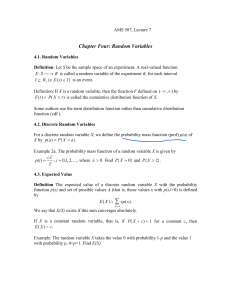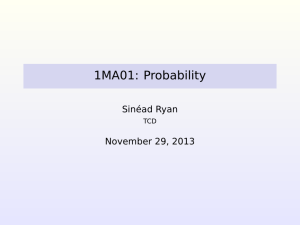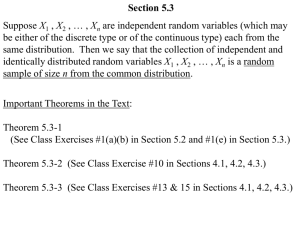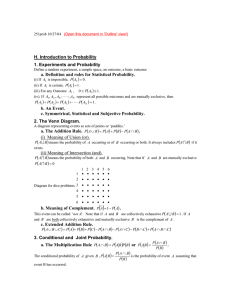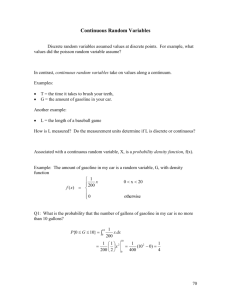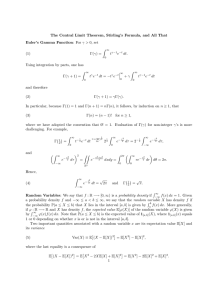Lecture 13
advertisement
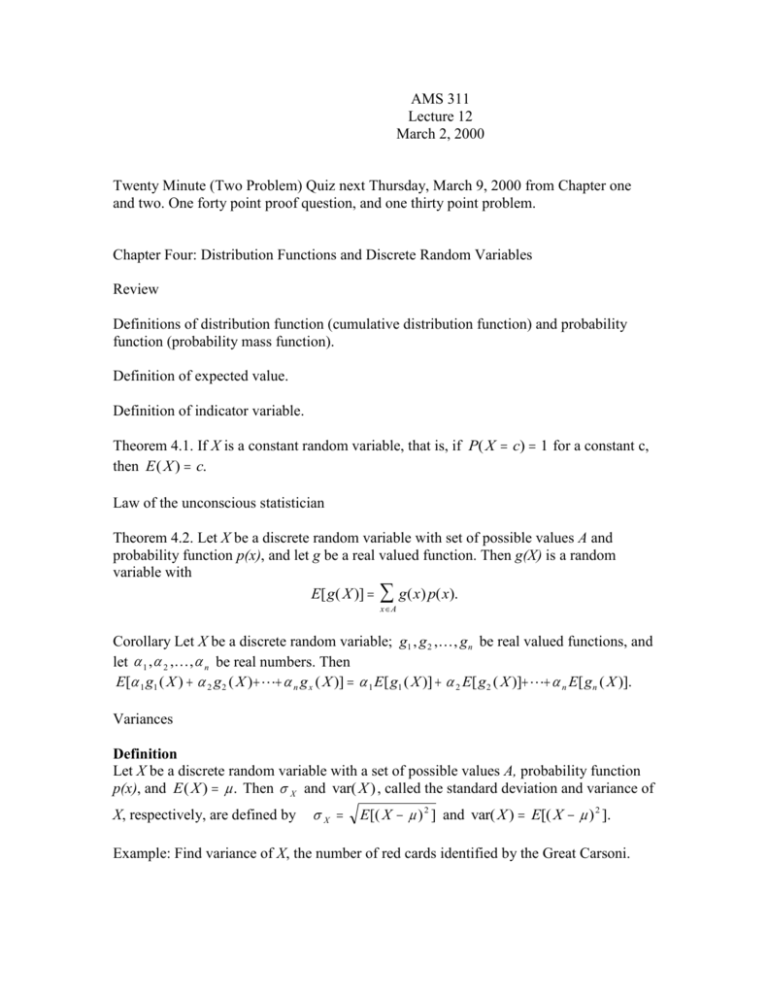
AMS 311 Lecture 12 March 2, 2000 Twenty Minute (Two Problem) Quiz next Thursday, March 9, 2000 from Chapter one and two. One forty point proof question, and one thirty point problem. Chapter Four: Distribution Functions and Discrete Random Variables Review Definitions of distribution function (cumulative distribution function) and probability function (probability mass function). Definition of expected value. Definition of indicator variable. Theorem 4.1. If X is a constant random variable, that is, if P( X c) 1 for a constant c, then E ( X ) c. Law of the unconscious statistician Theorem 4.2. Let X be a discrete random variable with set of possible values A and probability function p(x), and let g be a real valued function. Then g(X) is a random variable with E[ g( X )] g( x) p( x). xA Corollary Let X be a discrete random variable; g1 , g 2 , , g n be real valued functions, and let 1 , 2 , , n be real numbers. Then E[ 1 g1 ( X ) 2 g 2 ( X ) n g x ( X )] 1 E[ g1 ( X )] 2 E[ g2 ( X )] n E[ gn ( X )]. Variances Definition Let X be a discrete random variable with a set of possible values A, probability function p(x), and E ( X ) . Then X and var( X ) , called the standard deviation and variance of X, respectively, are defined by X E[( X ) 2 ] and var( X ) E[( X ) 2 ]. Example: Find variance of X, the number of red cards identified by the Great Carsoni. Theorem 4.3. var( X ) E ( X 2 ) [ E ( X )]2 . Theorem 4.4. Let X be a discrete random variable with a set of possible values A, and mean . Then var( X ) 0 if an only if X is a constant with probability 1. Theorem 4.5. Let X be a discrete random variable; then for constants a and b we have that var(aX b) a 2 var( X ), and aX b | a| X . Definition Let X and Y be two random variables and be a given point. If for all t>0, P(|Y | t ) P(| X | t ), then we say that X is more concentrated about than is Y. Theorem 4.6. Suppose that X and Y are two random variables with E ( X ) E (Y ) . If X is more concentrated about than is Y, then var( X ) var(Y ).
